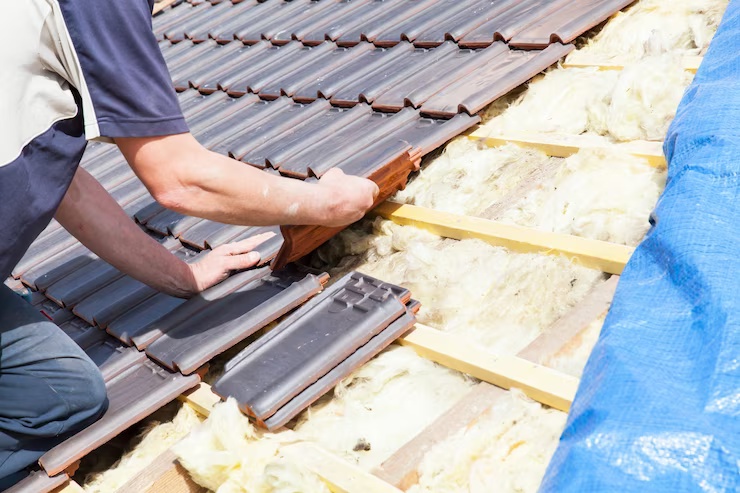Introduction
In the pursuit of creating a comfortable and energy-efficient home, one essential aspect that often goes unnoticed is the insulation of the pitched roof. Proper insulation in this area can significantly enhance the thermal performance of your home, providing comfort while also reducing energy consumption and costs. One effective solution for insulating pitched roofs is through the use of insulation boards. In this comprehensive guide, we will explore the benefits, mechanisms, and various options available for pitched roof insulation boards, highlighting their ability to shield your sanctuary from the elements.
Understanding Pitched Roof Insulation Boards
Pitched roof insulation board are rigid panels made from various materials, such as expanded polystyrene (EPS), extruded polystyrene (XPS), polyisocyanurate (PIR), or mineral wool. These boards are specifically designed to provide thermal insulation for pitched roofs, offering high levels of insulation while also being lightweight and easy to install. Pitched roof insulation boards come in different thicknesses and specifications to suit various roof types and insulation requirements.
The Benefits of Pitched Roof Insulation Boards
Insulating your pitched roof with insulation boards offers a multitude of benefits that contribute to the overall comfort and energy efficiency of your home. Firstly, it helps to keep your living spaces warm and cozy by reducing heat loss through the roof. By creating a thermal barrier, insulation boards prevent warm air from escaping during the colder months, thereby reducing the need for heating and lowering energy bills.
Moreover, pitched roof insulation boards can also help to keep your home cool in the summer by preventing heat gain from the sun. By reflecting solar radiation and reducing the temperature difference between the interior and exterior of your home, insulation boards help to maintain a comfortable indoor temperature year-round, reducing the need for air conditioning and improving overall comfort.
Additionally, insulation boards can also help to improve the structural integrity of your roof by reducing the risk of condensation and dampness. By providing a continuous layer of insulation, insulation boards help to prevent moisture buildup within the roof space, which can lead to mold growth, rot, and structural damage over time.
How Pitched Roof Insulation Boards Work
The effectiveness of pitched roof insulation boards lies in their ability to trap air within their structure, creating a barrier to heat flow. Most insulation boards are made from materials with low thermal conductivity, such as EPS, XPS, PIR, or mineral wool, which helps to minimize heat transfer through the roof. When installed correctly, pitched roof insulation boards create a continuous layer of insulation between the roof covering and the interior of your home, reducing heat loss and improving energy efficiency.
Types of Pitched Roof Insulation Boards
Several types of insulation materials are commonly used for pitched roof insulation boards, each offering unique advantages and considerations:
-
Expanded Polystyrene (EPS) Boards: EPS boards are lightweight and cost-effective insulation options for pitched roofs. They offer good thermal insulation properties and are resistant to moisture and mold growth. EPS boards are available in various thicknesses and densities to suit different insulation requirements.
-
Extruded Polystyrene (XPS) Boards: XPS boards are more durable and moisture-resistant than EPS boards, making them suitable for use in areas with high humidity or moisture exposure. XPS boards offer excellent thermal insulation properties and are available in a range of thicknesses and compressive strengths.
-
Polyisocyanurate (PIR) Boards: PIR boards are highly efficient insulation materials with excellent thermal performance and fire resistance properties. They are lightweight, easy to handle, and offer superior insulation compared to EPS or XPS boards. PIR boards are suitable for use in pitched roofs with limited space or where high thermal resistance is required.
-
Mineral Wool Boards: Mineral wool boards are made from natural or recycled minerals, such as rock wool or glass wool, and offer excellent fire resistance and acoustic insulation properties. They are durable, moisture-resistant, and provide effective thermal insulation for pitched roofs. Mineral wool boards are available in various densities and thicknesses to suit different insulation requirements.
Conclusion
In conclusion, pitched roof insulation boards offer a range of benefits for improving the comfort, energy efficiency, and durability of your home. By reducing heat loss, preventing heat gain, and improving structural integrity, insulation boards help to create a healthier and more comfortable living environment for you and your family. With a variety of insulation materials and specifications available, it's easy to find the right solution for your pitched roof. So why settle for a cold and inefficient roof when you can enjoy the benefits of shielded sanctuary with proper pitched roof insulation boards?


No comments yet